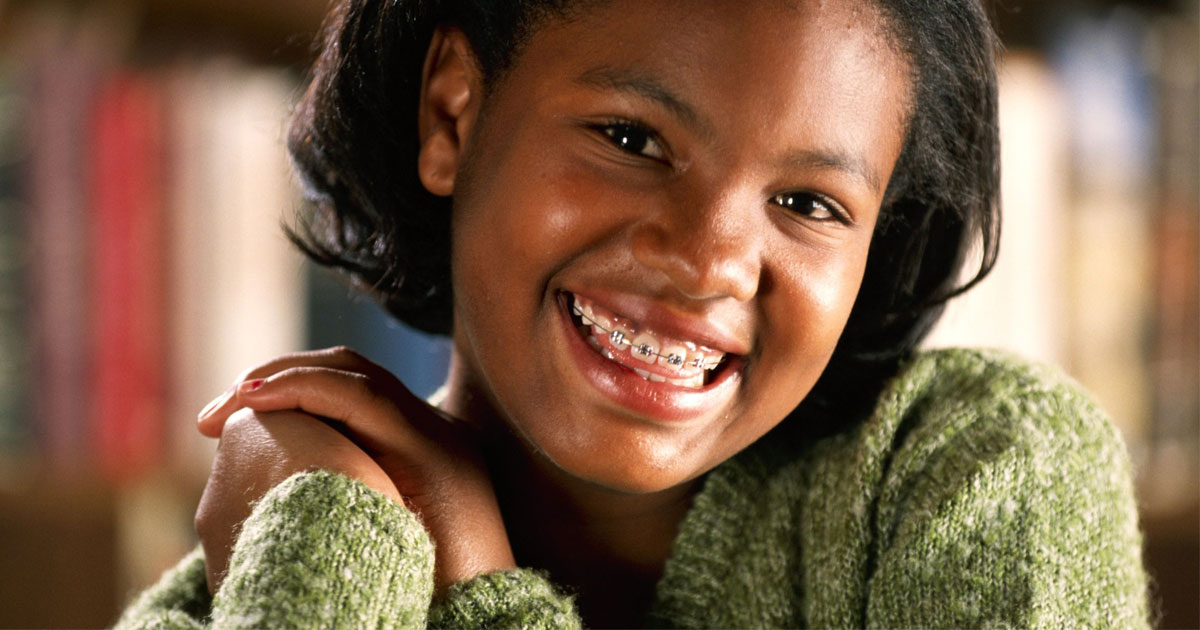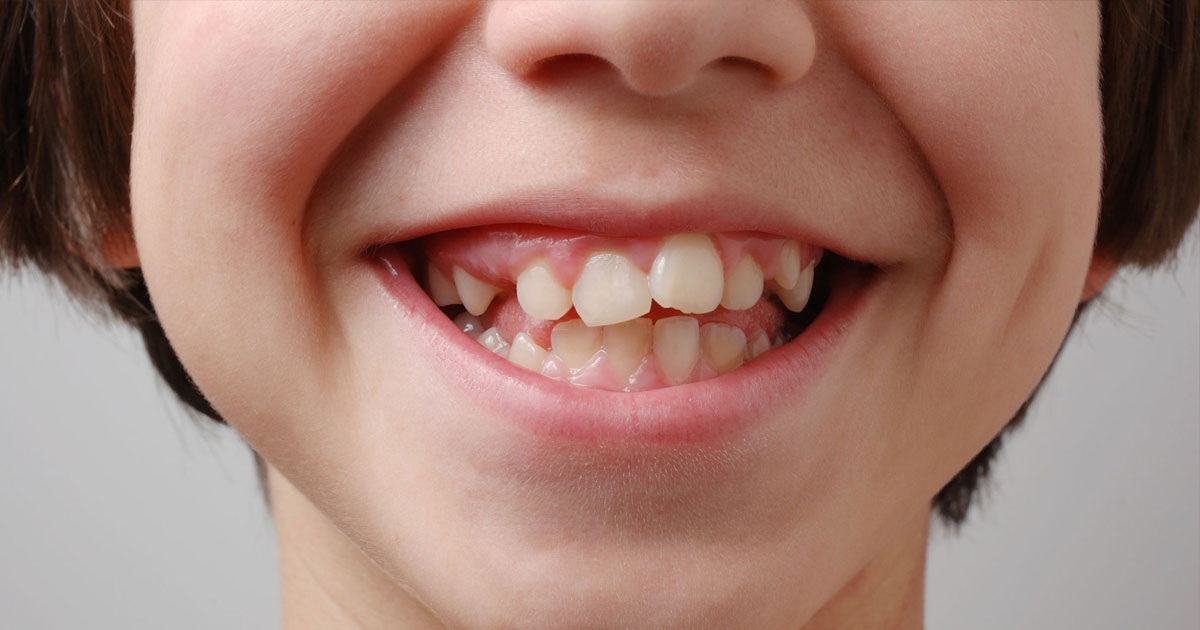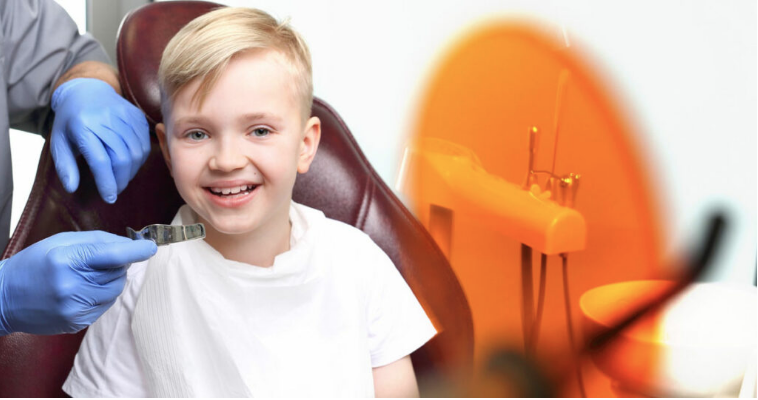When it comes to your child’s smile, it’s important to learn the benefits of early orthodontic intervention and treatment. Your child may have problems that can be assessed by professionals, and addressing them with orthodontic treatment can help avoid greater issues.
This is early intervention, also known as interceptive orthodontic treatment. By taking your child to see an orthodontist early on, you may be able to prevent the problem from getting worse or at least predict and prevent additional orthodontic issues throughout your child’s life. However, while this is one of the primary benefits of early orthodontic treatment, many people are unsure when to bring their child to the orthodontist. Others may not have heard of early intervention at all and wonder what an orthodontist can really do to help a young child without all their adult teeth.
Make no mistake; early orthodontic treatment is an excellent way to care for your child’s smile. We’ll explain how early orthodontic treatment works, why it works, and why you should consider it for your own child.
What Is Early Orthodontic Intervention?
In general, early orthodontic intervention typically happens when a child is around seven years old. At this time, children are expected to have a mixture of adult teeth and milk teeth, with some adult teeth ready to emerge and some milk teeth ready to loosen and fall out. The point of such a visit at such a specific time is to see if the child needs orthodontic help, including braces.
In some cases, the child may not need assistance right away and will come back in the future if problems start to arise. In other cases, the child will need orthodontic intervention to fix areas of concern or prevent them from worsening until full orthodontic care can be assessed.
What Does Early Orthodontic Treatment Fix?

There are a variety of oral problems a young child may have, and many of these problems can be solved with early orthodontic treatment. These problems can be identified at a young age and may be addressed before they worsen. Thus, taking your child in for early orthodontic treatment can help stop these problems early and reduce the need for extensive orthodontic care later on.
Without early intervention, these issues may have long-lasting effects as the child grows. If they don’t get help in time, they may be forced to address the problems as an adult with a less malleable jaw and set of teeth.
Common problems early intervention can address include the following:
A bite problem prevents your child from biting normally because the upper and lower teeth do not fit together the way they should. This can be broken down into further categories, like crossbites, underbites, and overbites.
- Crossbites happen when the jaw is shifted toward a particular side. It can result in some or all of the top teeth closing behind the bottom teeth.
- Underbites occur when all the top teeth are behind the bottom teeth. This results in the bottom teeth covering the top teeth when the mouth is closed.
- Overbites are the opposite and occur when the top row of teeth is pushed too far in front of the bottom teeth.
Early orthodontic treatment can help here, as braces can shift the teeth back into their proper position. Retainer use after braces can help keep the teeth in place.
Spacing Problems
When adult teeth emerge, they need an adequate amount of space to remain healthy and straight. Spacing problems can come in two different forms—either the mouth has too much space, or it has too little.
Too much space in the mouth can lead to gaps between the teeth, and this exposed gum tissue can be vulnerable to injury or infection as a result. Too little space in the mouth means the teeth are crowded together. This often results in crooked teeth, as there’s not enough space for each tooth to grow correctly, and it can lead to bite issues, decay, and more.
Orthodontic intervention can help resolve either of these problems at a stage where the issue is noticeable but not prevalent.
Teeth Shifting
The jaw is more malleable than you might think, especially in children, as their bones haven’t been fused together yet. For this reason, children can even change the shape of their mouths with enough consistent pressure. This pressure often comes in the form of thumb sucking or tongue thrusting, both of which can apply enough force to push the jaw into a new position while the jaw is malleable. This can cause issues with spacing, bite, and more.
Orthodontic treatment can help move the teeth back into place while the jaw is still malleable. Your orthodontist can also help your child break the habit that caused shifting to happen in the first place.
Benefits of Early Orthodontic Intervention and Treatment

Taking your child to get early orthodontic treatment can truly benefit them later in life, but not just because it prevents them from having to do this same treatment when they’re older. Here are a few more ways that early orthodontic treatment can help your child.
A Straighter, Healthier Smile
Getting straighter, healthier teeth is the primary benefit of early orthodontic treatment. If your child receives early intervention, they’ll be able to complete orthodontic treatment earlier, as well. This means that they’ll be able to have straight, healthy teeth for years to come, potentially at a time when many of their peers may just be getting their braces for the first time.
A Confidence Boost
While the status of a smile shouldn’t be able to impact self-esteem and self-image, the unfortunate reality is that many people are insecure about how their teeth look. Whether this manifests as closed-mouth smiles in pictures or in a general lack of confidence, it’s a common insecurity. Fortunately, it’s also one that can be addressed early or even prevented by helping your child improve their smile.
Benefits Beyond Braces
Orthodontists are known primarily for providing braces and straightening teeth, but that doesn’t mean this is the only help your child might be able to receive when you go in for early orthodontic intervention. Sometimes, milk teeth will be extracted on a schedule to help ensure the adult teeth come in properly. Other times, your child may be prescribed a removable appliance like a retainer to help teeth remain in their proper position.
Challenges Related to Early Orthodontic Intervention
If you’re planning to take your child in for early orthodontic work, it’s important to consider how your child may react to the idea of wearing braces or another orthodontic appliance. While the whole point of wearing braces is to eventually have them removed and go into the world with a healthy, happy smile, traditional braces are very visible. While alternative measures like Invisalign and other less-obtrusive braces may be used for adults who wish to improve their smile, they’re often not suitable for children.
Many parents are concerned because the formative years are marked by the desire to fit in, be popular, and make friends—this may be an issue for a child who’s self-conscious about the fact that they have to get braces at a young age.
It’s important to keep in mind, however, that getting braces early in life will likely prevent the need to have them later in life. If your child’s orthodontic issues are such that they require braces at a young age, but you choose to forego orthodontic care, they’ll just need to have them when they’re older. Often, issues that weren’t addressed at a young age are more difficult to fix as the jaw becomes less malleable, and the child may need to wear braces for an extended period.
Ultimately, choosing early orthodontic treatment is a good way to ensure your child will have fewer oral problems down the line. While your child may not see it that way, since getting braces at a young age can be tough, they will likely go on to appreciate it later.
Signs Your Child Needs Early Orthodontic Treatment

It can be tricky to identify potential problems if you’re not an orthodontist. Still, if you’re paying attention, you may be able to tell if your child could benefit from an early orthodontist visit, whether or not it ends with braces. Many orthodontic issues are visible when your child speaks or smiles.
Keep an eye out for the following:
- Poor oral hygiene habits that could be creating dental problems
- Abnormal-looking bite, including a visible underbite or overbite
- Gaps in their smile that aren’t caused by the loss of milk teeth
- Crooked adult teeth
- The presence of thumb-sucking or tongue thrusting
How To Prepare Your Child for Early Orthodontic Intervention
Visiting the orthodontist can be like visiting the dentist, and for many kids, visiting the dentist can be stressful or even scary. Orthodontists must also install, update, and remove appliances like braces or retainers, which can seem frightening, especially for a child as young as seven years old. However, there are ways you can prepare your child for the visit to make them less nervous about the process.
The most important step is to make your child feel at ease about both the dentist and the orthodontist. If they have questions about the process, prior to the initial visit is a good time to answer those questions and give them all the information they may need to know. You can walk them through the process of the typical orthodontist visit, too. If they’re to receive braces and are afraid of being teased, it may help to point out the numerous other people who have braces, which can help them feel less insecure.
If you want to be sure that your child will be comfortable and cared for, it’s a good idea to schedule a consultation first. A consultation can help you and your child get to know who the orthodontist is and what their office is like. This visit can help show your child that the orthodontist’s office is not a scary place at all!
Book Your Visit and Initiate an Early Orthodontic Intervention
The most important factor in successful early orthodontic treatment is where you go to get it. The atmosphere of the office and orthodontist can be the difference between your child feeling safe and secure or nervous and uncomfortable. It’s also important to make sure that you’re working with someone who understands the needs of your child, which will ultimately be an orthodontist who is experienced at providing early orthodontic treatments. The better the orthodontist is, the less you and your child have to be nervous about.
Parents and guardians in Gilbert, Arizona, should consider taking their child to get early orthodontic help from Robison Orthodontics. We’re a team of trained, experienced orthodontic professionals who have made it our goal to provide expert orthodontic help to adults and children alike.
*Editor’s Note: This article was originally published Mar 15, 2021 and has been updated December 16, 2022.

Dr. Tyler Robison is an alum of Mesa’s Mountain View High School. He graduated from Brigham Young University before being accepted to the “Top Ten-nationally ranked” University of Louisville in Kentucky, where he earned his Doctorate in Dental Medicine and a Master’s Degree in Oral Biology. He graduated with honors in the top ten percent of his class. Dr. Robison continued at the University of the Pacific in San Francisco, where he received a second master’s degree in dental science and his orthodontic certification.


